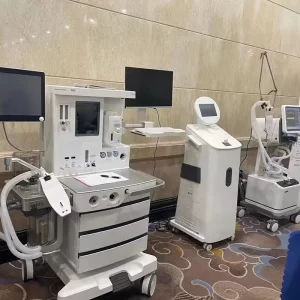The utilization of respiratory and anesthesia machines in medical settings has revolutionized patient care, enabling precise control over ventilation and the administration of anesthetic agents. However, amid these advantages, it is crucial to acknowledge and address the potential infection risks that can arise from the use of these vital medical devices.
The Role of Respiratory and Anesthesia Machines
Respiratory machines, commonly known as ventilators, play a pivotal role in assisting patients with compromised lung function to breathe effectively. These machines deliver a controlled mixture of oxygen and air to the patient's lungs, ensuring adequate oxygenation and carbon dioxide removal. Similarly, anesthesia machines are essential for administering precise concentrations of anesthetic gases to maintain patient comfort and safety during surgical procedures.

Potential Infection Risks
1. Contaminated Exhalation Valves
One of the primary concerns associated with respiratory machines is the risk of contamination through exhalation valves. While these valves are designed to allow air to exit the patient's airway and into the atmosphere, they can become a potential source of infection if not adequately disinfected between patient uses. Contaminants expelled during exhalation can accumulate on the valve's surfaces, potentially leading to cross-contamination.
Preventive Measures: Regular and thorough disinfection of exhalation valves is essential to mitigate this risk. High-level disinfection methods, such as high-temperature disinfection or the use of hydrogen peroxide and ozone, should be employed to ensure the complete elimination of pathogens.
2. Microbial Growth in Tubing and Water Reservoirs
The tubing and water reservoirs within respiratory and anesthesia machines provide an ideal environment for microbial growth. Condensation, moisture, and residual organic matter can create a breeding ground for bacteria and fungi. If left unchecked, these microorganisms can contaminate the gases delivered to the patient.
Preventive Measures: Regular cleaning and disinfection of tubing and water reservoirs are imperative. Follow the manufacturer's guidelines to prevent microbial growth effectively.

3. Cross-Contamination Between Patients
Respiratory and anesthesia machines are often used sequentially for different patients. Without proper disinfection, these devices can serve as vectors for cross-contamination. Any pathogens present in the machine's components or tubing can be transmitted to subsequent patients, posing a significant infection risk.
Preventive Measures: Rigorous cleaning and disinfection protocols must be followed between patient uses. This includes not only the machine's external surfaces but also internal components and tubing.
4. Inadequate Hand Hygiene
Healthcare professionals operating respiratory and anesthesia machines must maintain strict hand hygiene. Failure to do so can introduce contaminants to the equipment, which can then be transmitted to patients. Proper handwashing and the use of personal protective equipment are vital aspects of infection control.

Preventive Measures: Healthcare providers should adhere to rigorous hand hygiene practices, including handwashing with soap and water or using hand sanitizers with at least 60% alcohol content.
Conclusion
Respiratory and anesthesia machines are invaluable tools in modern medicine, yet they carry inherent infection risks. To ensure patient safety and prevent healthcare-associated infections, it is imperative to implement stringent cleaning and disinfection protocols, adhere to proper hand hygiene, and follow manufacturer guidelines meticulously. By addressing these potential infection risks, healthcare facilities can continue to provide high-quality care while minimizing the chance of nosocomial infections.